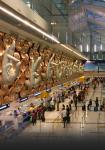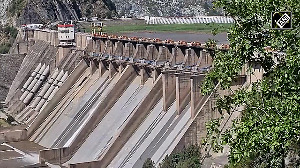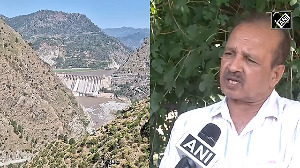Forget the face-to-face, pen-and-paper interviews. Market research in the 21st century has become tech-savvy. And after maturing through several generations of technological enablement, these methods are less expensive, generally take less time to conduct and are likely to give more unbiased responses.
Quantitative and qualitative research services are now available across several areas such as media research; economic and environmental impact assessments; event and exhibitions; and consumer research, among others. This gamut of offerings has resulted in multifaceted research projects -- often utilising different, yet complementary research techniques.
Different research problems demand different methods. For instance, event and exhibition analysis generally requires hand-held or self-completion technology in order to produce instant results.
On the other hand, computer aided telephone interviews may be the best answer for research to be conducted among several respondents spread across the world. Some of the methods used extensively today are:
Computer assisted telephone interviews
The International Rugby Board and each of its 10 official RWC Rugby World Cup partners required research across five key rugby markets -- Australia, UK, France, New Zealand and South Africa.
Since telephone ownership is common in these developed countries, CATI was the best solution for collecting data from a geographically dispersed sample.
CATI was also used considering the client's need for cost effectiveness, since telephone interviews are cheaper to set up and conduct on a per person basis, vis-à-vis face-to-face interviews.
The objectives of the study were mainly to map the image of the RWC against that of other top international sporting events and profile populations in terms of their interest in rugby union. To this end, Comperio Research conducted 500 CATI across each market. Using telephone directories, it was possible to select random samples.
Moreover, telephone interviews provided more perceived anonymity, and possibly more validity, since respondents felt freer over the telephone than in person.
Interviews were conducted both before and after the RWC to make pre-to-post data comparisons on various aspects such as awareness of the RWC, interest and engagement levels with rugby union, recognition of, and brand association with, the RWC logo and so on.
Computer assisted personal interviews
CAPI allows interviewers to conduct face-to-face interviews using the computer. This method can be enabled through specialised software. Here are some reasons why the quality control of data is superior vis-à-vis face-to-face interviews:
The technology enables systematic branching of questions so respondents can be asked only questions relevant to them and their interests. Interviewers cannot miss questions or ask the wrong questions.
-
Customisation of questions happens automatically.
-
Mathematical calculations are carried out within the computer program.
-
The computer checks for inadmissible or inconsistent responses.
-
Human data entry errors are eliminated.
CAPI can also include Computer assisted self-interview sessions where the respondent interacts with the computer-based system for a short period, but the interviewer remains available for instructions and assistance.
Computer-based systems used for CAPI or CASI mostly work on Palm OS, the world-standard handheld operating system, and allow data to be entered using either the keyboard or directly onto the screen using a stylus.
Data from different terminals can then be sent to a central computer where it can be merged, monitored and analysed. Real time data accumulation allows top-line data analysis as and when required and any sample-related problems can be identified quickly.
The Sunday Times Motorshow Live attracts more than 5,00,000 visitors over 10 days in the UK. A client wanted to collect 30,000 contact details (phone numbers, email IDs and so on) to create a database for direct marketing future event tickets.
Using the traditional method would have meant collecting 3,000 names a day using pen and paper and then manually entering them into a computer.
Instead, Comperio Research used CASI by utilising its point-of-service kiosks. These intelligence kiosks occupied minimal space and could even operate on battery power. Each kiosk had a Comperio staff member in order to attract spectators to complete the questionnaire.
Using CASI, contact details from the required number of visitors were collected and processed immediately into a database.
Web-based surveys
The Internet can be used in a number of ways to collect primary data. Visitors to sites can be asked to complete electronic questionnaires, the questionnaire itself can be sent by email or even online focus group discussions can be held in chat rooms.
Response rates are known to increase, if an incentive is offered. This method is relatively inexpensive, allows usage of graphics and verbal stimuli and is the fastest when it comes to large samples.
A financial services company required feedback from clients on specific elements of its corporate hospitality programme. Questionnaires were emailed to all participants shortly after the event, with an assurance of anonymity (to encourage honest responses).
On receiving a completed questionnaire, the email system automatically submitted the answers to the analysis software. This allowed a quick and efficient way to collect and analyse the data.
Moreover, given that most respondents were senior managers, with little time for face-to-face interviews, it served as a non-intrusive way to collect feedback.
It is important to understand the ultimate objectives and requirements of the research before choosing the methods(s). While methods like CATI, CAPI and CASI have several advantages there are certain shortcomings too.
For instance, during CATI, respondents can simply hang up, the interviews need to be short, visual aids cannot be used and the researchers cannot observe respondent behaviour or body language.
CAPI/CASI could prove to be quite time consuming since the construction and programming of a CAPI questionnaire takes considerable time. Web-based surveys may not allow you to reach your target population adequately and the response rate could possibly turn out to be much lower than what was estimated.
A good market research design exploits the strengths as well as blunts the limitations of the research method(s) being used. With technology growing at a rapid pace, newer and better market research methods are expected to become common.
Deepak Halan is senior research manager, Comperio Research







 © 2025
© 2025